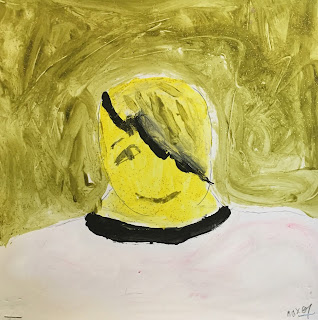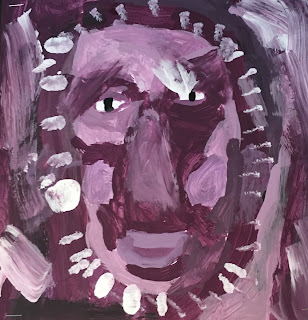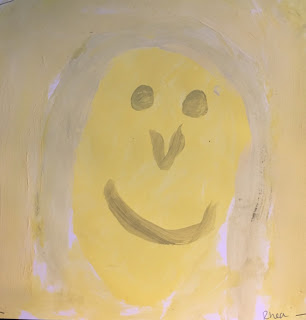Two notes to readers before we get into the meat of things here. I began writing this post about the joy and importance of woodworking at The Lake and Park School. As I started thinking about our experience with carpentry at school and researching the topic as a whole, I realized the importance of woodworking goes deeper than I gave it credit and it shares its importance with many other hands-on activities. These experiential activities also appear to be at least a partial counter to the detriments of a globalized and technologically advanced American society replete with mass-produced childhood entertainment.
My second note may be unnecessary, but I feel the need to mention that I am nearly twenty five and this writing comes from my own observation of children as a teacher, outdoor educator, friend, and babysitter, not as a parent or some all-knowing professional--who really is? That being said, this is my opinion and I believe that I have found something true and important. I hope you are able to find parts of this post interesting, provocative and maybe even a little useful.
…
Caroline Pratt began her work in education at a very young age in the early 1900’s. Her school, The City and Country School, the name of which you may notice shares its structure with our own, and for good reason, still stands today as an important (and expensive) New York private school for children in nursery school to fifth grade. I can’t speak so much to the school as it stands today although I am sure it is lovely, but Pratt’s philosophy is timeless and important to all of the teachers at Lake and Park.
At Pratt’s “play school”, children learned how the world around them functioned. They watched supplies arrive in large crates at the city docks, saw large machines load coal into containers to be burned for fuel, and they talked to firemen, postmen, and other people who made their city run. After observing, questioning and talking with each other, they played, worked and wrote or dictated poems and stories to their teachers.
In play they pretended to be machines, family members, and the people they saw working in their city. In the blocks they built the New York piers. They worked important jobs in their classes that dictated their curriculum. Actual jobs selling school supplies to other classes within the school led to investigations on erasers and where rubber comes from or trade routes in ancient times. Their work with the printing press led to poems about machines. Their imaginative ideas about the goings on in their larger physical space engaged them and inspired imaginative school work. Watching the loading of coal, a child came up with this poem.
The Giant Shovel takes a bite of coal and he spits it down into another boat
Then the coal wagon comes and takes his breakfast away from the boat
The Giant Shovel takes a bite and chucks it down into the coal wagon
Then another bite and then another bite until the coal wagon fills up
Then chunk a chunk chunk, away goes the bingety bang bang truck
This is an imaginative version of a real life event. It pertains exactly to what a child knows - eating, coal, vehicles, and still it holds the imaginative beauty in a child’s thought process. Pratt wrote that without the real life experience, this is not possible. A child’s imagination is linked to a true understanding of the world around them. Thus, a child with incorrect facts or one lacking in true experiences is missing something crucial. If their knowledge is not complete, then their imagination, as Pratt sees it, is not truly imaginative; rather, they may be humorous for the enjoyment of adults or may simply be confused.
This is the heart of her all-angle attack on fairy tales. Seriously, Caroline! What could be harmful about the creative and timeless stories children share?
She will tell you.
“The literary child may be facile with his borrowed ideas and phrases, but they are borrowed, hollow, without the vitality of personal emotional experience. A child who has shared an early morning sunrise with the birds has had an emotional experience which the child who has merely read about birds and sunrise can never equal.”
She believes a child needs real world experience in order to gain an imagination that also reflects her/his understanding of the world. A child without first hand experience and with confusing fairytale ideas in its place, is even more disadvantaged. Such a child’s ideas are muddled and their thoughts are not their own.
Her hardlined philosophy on this matter is especially important in our current time, but too black-and-white and impossible to carry out. It is difficult to translate to the situation current children find themselves in for two reasons. The first is that the gears that turn our everyday functions are hidden far beneath the surface and the second is the prevalence of widespread, mass-produced, entertainment for children.
Let’s deal with that first reason. Pratt wanted her stories and her field trips to focus on the “here-and-now.” This is tricky for the children of Lake and Park for their “here-and-now” is neither here, nor now. We can’t watch lamplighters turn on the street lights as the sun goes down or machines dump coal into furnaces to run other machinery and keep us warm. Our world simply happens; We don’t see it or feel it. The lights work automatically, food arrives at our door and the internet has the answers to all of our questions, wrong as they may be.
To emphasize this conundrum, a man named Thomas Thwaites set out to make a toaster from scratch. Although he knew it would be complicated, even the cheapest toaster he could find proved to be almost impossible to replicate. Here are the “insides” of the cheapest toaster Thomas Thwaites could find.
Thwaites found one cheap toaster featured 400 parts and over 100 different materials
After speaking to experts in mining, metallurgy, plastic making, he found that no one could help him to mine the copper for a few wires, melt the oil for a single mold or smelt a small amount of iron into steel for one toaster. Our world exists on a high tech, globalized and mass produced order that is absent from us. Almost uncaring. As a consumer, we do not engage in the creation or facilitation of our world.
In this environment, it is more difficult to inspire children with views of the facilitation of our daily comforts, as was readily done in the early twentieth century. They are still able to find that inspiration however. They love the garbage trucks, mail carriers and light rails in the city. Here we begin to see the first part of a solution to something that isn’t a problem in other contexts. If children are given the opportunity to step outside their houses and away from their screens and brought to places where people are working, or to natural places where life is happening, they may see real-world activity that helps them to put their own world into order and inspire their creativity. A creativity that Caroline Pratt might argue is stronger as it is based in true life experience and demonstrative of a truer understanding of the world.
The second reason her philosophy does not translate well to the world of today’s children, is the prevalence of entertainment trends. The fairy tales of Pratt’s day are more than stories in books now. They take many forms, penetrate into all aspects of children's lives and the sheer quantity of children's entertainment going beyond the here-and-now is overwhelming. Screens are everywhere, with movies cartoons and games, trends like Pokémon become clothing and merchandise in addition to being made into TV shows themselves. We also have games, social media phenomena and collectable trinkets, which may become markers of social status.
Much like the toaster, people far away produce pieces of Pokémon, PJ Masks, Grossery Gang™ and other trends for mass child consumption and all of these trends have been popular at our school. A very smart man couldn’t build his own toaster as our equally smart children are far removed from the process by which their entertainment is created, manipulated and delivered to their communities.
Though their entertainment does not arise out of their own imagination, I do not think these popular trends in childhood entertainment are inherently bad. In fact I think they can lead to positive peer interactions in addition to simply being a being a source of joy and allowing for creativity if used wisely. Putting these entertainment trends to good use means carefully positioning them in a child’s life where they are forced to use their own brain in conjunction with the trend’s ready-made imagination of its creators. The solutions to this diet of too much mass consumed entertainment must then come from hands on, experiential, self directed work such as clay, wood working, art and outdoor exploration with and without peers.
Outdoor exploration in the woods or the city, is essential as that is where kids are able to get the first hand experience that Pratt believed to be so important. They build an understanding of the world and their place in it with their own minds and with the ideas of their peers. Exploring their world must preclude and later, coexist with entertainment trends and hands-on art and building experiences. This is where children find the inspiration for the other pieces in their life.
Very Beginning Room students exploring the area around our school
Mass produced entertainment tool is an inescapable part of imagination building. If many children know about Pokémon they can relate to it together. They may go outside and pretend to be Pokémon trainers and catch each other or build Pokémon forts. If kids are playing together outside with a shared experience, their mutual knowledge can lead to high level play, creating broader social understandings, imagination and creativity. When mass-produced, child entertainment is placed in combination with a hands-on experience where children are using their and their peers’ minds in a real environment, the negatives of that entertainment can be turned on their heads.
| Using a hammer is a skill that requires practice |
Experiential activities such as woodworking or clay can be used similarly. These activities on their own are essential as they push children into taking their sense data - what they see, hear, smell and touch and combining it with personal experience to create art, tools or simply forms that reflect the work put into the process of making. Their minds and bodies are in charge. These activities are not always easy, children need to put many developmental pieces in order to build with new materials and to use real tools, but they do it with relish.
The Very Beginning may start to learn woodworking with hammering nails into stumps while the Beginning Room may start to put pieces together and add accessories. Soon they are putting pieces together logically from our standpoint and naming them as they see the products’ functions emerge: a car, a sword, a boat.
The process is difficult, but the results are tangible and rewarding. As a child works and gains new skills they see measurable progress. Children can describe their work they have done and the skills they have learned to others and be proud of what they have accomplished. This leads to understandings of self-worth and a greater knowledge of practical skills.
These important activities can be used in combination with entertainment trends as well. Kids can learn the processes of technologically simple, intellectually difficult tasks that also pose gross and fine motor challenges while creating objects or characters from popular vehicles of entertainment. This may connect them more to that piece of entertainment as well as to friends who enjoy the same thing. With enough real-world experience to leave the realm of prefabricated imagination the entertainment trends help not hinder their woodworking, clay forming, clothes sewing, baking, etc…
The children in the above photo took playdough and made concentric circles. They then labeled it as “rings of a tree”, someone knowing that one could use tree rings to count the years a tree has been alive.…
As a child I could look at the world through Lion King tinted glasses. I would understand the world around me because I could relate my experiences to those of Simba, Nala or Timon. This helped me to explain things. Without experiences where I was forced to ask myself or others questions to understand them the world would have been very confusing however. I was able to see that things happened for many reasons and I could explain the world based on personal experience as well as disney movies.
Caroline Pratt was too hard-lined in her philosophy. I believe fairy tales, Saturday morning cartoons, and widely enjoyed games are not a detriment to children if they are taken in moderation as well as in combination with experiential activities that push a child to think for him or herself. An anti-fairytale ideology comes from the seed of something important and how we decide to act on that kernel of truth now is essential to a child’s development. They must be able to understand their world, their minds, and also to imagine something beautiful beyond the present time and beyond their physical space.
We need the entertainment and the excitement both reality and a made-up story can bring. In our Seattle bubble, where life seems to be happening far away, we all need to my enthralled in stories and experience our own “here-and-now” and mold our experience with clay or put it together with wood in new and imaginative ways--we can learn and be inventive through hands-on creation with the people around us.
Further reading
The Toaster Project by Thomas Thwaites
(and similarly)
I, Pencil, My Family Tree as told to Leonard E. Read
Found here http://www.econlib.org/library/Essays/rdPncl1.html#I, Pencil
And very importantly,
I Learn From Children by Caroline Pratt



























































